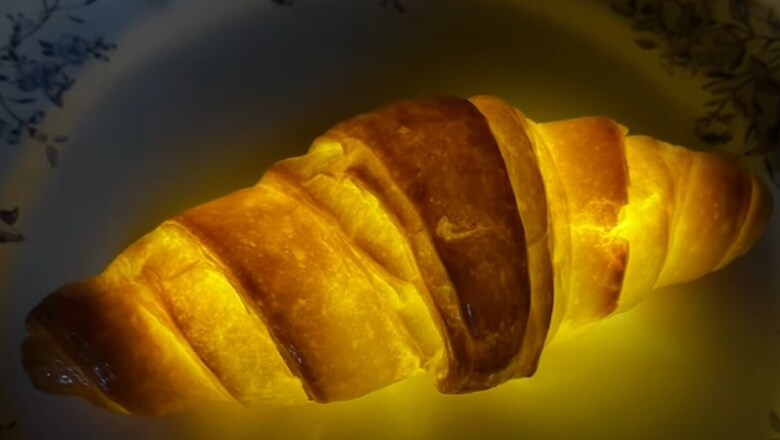
views
A digital creator and artist, Connor Creates, recently shared a video in which he turned two croissants and a baguette into a lampshade. In a YouTube video, he documented the thought process of changing an edible project into a warm lamp. The process can be summarised as: first Connor hollows out the insides of plain croissants and the baguette. He makes sure that the breads are thin enough so that light can pass through them, but not so thin that it tears apart. He then coats both the insides and the outside of the bread goods with transparent resin multiple times. After three days the croissants and baguette are solidified. Finally, he fits them with golden LED lights and a small switch, and the lamps are ready.
While sharing this process on YouTube, Connor wrote, ‘Carb-decor is gonna be the next trendy thing. Such a fun project recreating bread lamps made by Japanese artist Yukiko Morita."
Commenting on his video, a YouTube user inquired, “This is so awesome. I am definitely going to do it. Do you think that it could preserve any type of food? As an example, what if I made a McDonald’s hamburger light or something like that? I realize it would be a different application, but can I just pour resin over anything and it doesn’t go bad?"
In response, Connor wrote, “Thanks! And I’m no expert on resin but from what I know the item you are preserving is best if it’s dry (so anything with a sauce, or liquid in it, etc) probably not as ideal." He added, “The bread works well cause it’s dried out and there’s no additional ingredients really."
Japanese artist Yukiko Morita is credited with first coming up with the idea of turning bread-based products into lamps. The Kyoto City University of Arts graduate launched her brand called Pampshade in 2016. Her bread-based products are priced between Rs 4,400 to Rs 11,500.
A post shared by Pampshade by Yukiko Morita (@pampshade_by_yukikomorita)
Yukiko Morita’s website explains the name “Pampshade" as the “blending of two seemingly incompatible elements — bread and lampshades." It further explains that bread is called “pan" in Japanese, so the name “Pampshade" combines the Japanese word “pan" with “lampshade". Her website also mentions that she uses the insides or the leftovers of the bread for making sweets and does not waste any food.
What's your reaction?




















Comments
0 comment